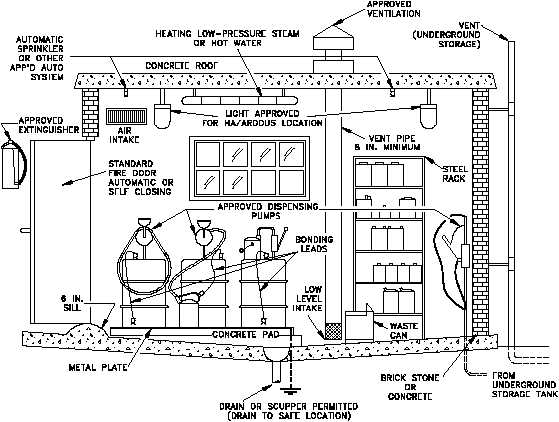DOE-HDBK-1015/2-93
FLAMMABLE AND COMBUSTIBLE LIQUIDS
Hazards of Chemicals and Gases
CH-05
Rev. 0
Page 40
Figure 10 A Flammable Liquids Mixing and Storage Room
Losses by evaporation of liquid stored in safety cans at ordinary temperatures are negligible.
Storage of flammable and combustible liquids in open containers should not be permitted.
Approved containers for flammable liquids should be closed after each use and when empty.
Warning labels should be removed from flammable liquid containers when empty (vapor free).
Bulk Class I liquids should be stored in an underground (buried) tank or outside a building. No
outlet from the tank should be inside a building unless it terminates in a special room, as
illustrated in Figure 10.
Vehicles used on plant property to transport flammable and combustible liquids in sealed
containers should be designed to minimize damage to the containers.
When employees are filling tanks and other containers, they should be sure to allow sufficient
vapor space (outage) above the liquid level in order to permit expansion of the liquid with
changing temperatures. For example, gasoline expands at the rate of about one percent for each



